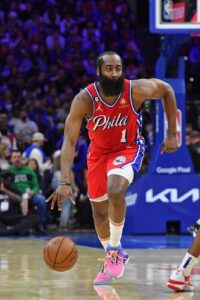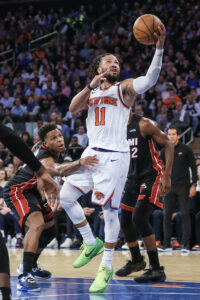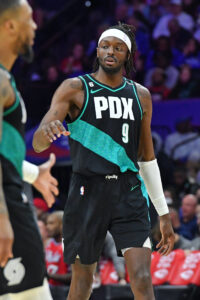Scoot Henderson declared this week that he intends to take home the NBA’s Rookie of the Year award in 2024, and he should be in a good position to do so.
Assuming the Trail Blazers trade Damian Lillard before the season begins, Henderson is primed to play a key role in the backcourt for a Portland team that figures to take a step back and focus more on developing its young cornerstones than vying for a high seed in the Western Conference. In that scenario, this year’s No. 3 overall pick would have the ball in his hands a lot and would be given the opportunity to take on considerable scoring and play-making responsibilites as a rookie.
Unsurprisingly though, betting site BetOnline.ag doesn’t consider Henderson the Rookie of the Year favorite. That spot belongs to No. 1 overall pick Victor Wembanyama, widely considered the best prospect to enter the NBA since LeBron James.
Like LeBron in 2003, Wembanyama is considered a safe bet to make an immediate impact. While San Antonio will likely manage his workload, especially in back-to-back scenarios, he should play a significant frontcourt role on a retooling Spurs team that intends to build around him for years to come. It’s possible Wembanyama won’t match Henderson’s scoring numbers as a rookie, but he has a better chance to be a two-way force in his first NBA season.
While Wembanyama (-150) and Henderson (+250) are the two Rookie of the Year frontrunners, BetOnline.ag considers Thunder big man Chet Holmgren (+325) a legitimate contender too. The No. 2 overall pick in 2022, Holmgren missed his entire rookie season due to a foot injury, putting him in position to essentially get a second rookie year in 2023/24.
Holmgren likely won’t be asked to carry much of the offensive load for an Oklahoma City team that has plenty of scoring options, but his ability to protect the rim and block shots could make him an ideal fit for the Thunder, who could have used that sort of player last season (they ranked 22nd in blocks per game).
Holmgren’s year of NBA seasoning off the court could work in his favor, as could a strong year from the Thunder, who came one play-in game away from a postseason spot last season. Playing a key role on a playoff team helped swing the Rookie of the Year vote in Scottie Barnes‘ favor in 2022, for instance.
While BetOnline.ag views them as longer shots, other rookies who were drafted in the lottery in June, including Hornets forward Brandon Miller and the Thompson twins, could make a run at Rookie of the Year honors too.
We want to know what you think. Who’s your early pick for Rookie of the Year in 2023/24? Vote in our poll, then head to the comment section below to share your thoughts!

 As similar as the two situations are, there are two key factors that differentiate them.
As similar as the two situations are, there are two key factors that differentiate them.


